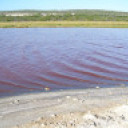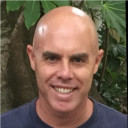Starting Workshops, Starting an Industry


Starting Workshops, Starting an Industry
"To a surfer, a board is more than a piece of equipment; it is a symbol, a physical emblem of cultural, social, and emotional meanings."
Andrew Warren is an economic geographer at the University of Wollongong. He's also a surfer. Over the last five years Andrew and his colleague Chris Gibson have written a book that traces the historical origins of surfboard making, from the formative years in the 50s and 60s up to the present. Their book, titled Surfing Places, Surfboard Makers, is based on research in Hawai'i, California, and Australia, it's told through the words and experiences of board makers. They interviewed 135 shapers, glassers, sanders, polishers, and shop owners to tell the story.
The following is Chapter 3, Starting Workshops, Starting an Industry, which examines the development of the surfboard industry, focusing largely on the Australian context. Compare it to the present industry with global shaping companies, computer aided design and shaping, and an array of modern materials.
******
Where there have been large numbers of surfers, surfboard workshops have invariably appeared, whether in Durban, South Africa, or Duranbah Beach, Australia. By the late 1950s, the early days of the foam era, small surfboard firms had sprung up in surfing hubs along the coasts of California, Hawai‘i, and Australia. In California and Australia, commercial production surfaced within subcultural groups of local surfers who, seeking legitimacy and some form of monetary wage, started to make and sell boards in their home areas. Board production on O‘ahu has had a much more extended historical connection to traditional Polynesian forms of board making, but there too commercial production emerged in the late 1950s and early 1960s in a subcultural setting where keen surfers, often but not always haole immigrants, turned to making boards for others, for cash.
Bill Wallace described his experience as one of Australia’s first commercial surfboard makers as follows:
"I was in the Bronte Surf Life Saving Club. I was a boat captain at Bronte for more than ten years, and we started to surf a bit. I was working as a pattern-making apprentice when I started to make surfboards for myself. The first boards I was making were hollow wooden models based a lot on Tom Blake’s designs. Anyway, I finished my apprenticeship about the same time that I started to sell a few surfboards to members of the surf club that were also surfers.
screen_shot_2014-10-22_at_3.46.53_pm_0.pngBy the late 1940s, I decided to give the surfboard-making business a go. I rented a garage in McPherson Street, Waverley. I was making surfboards, three or four per week, and getting quite busy. I did everything myself, though. It wasn’t until the mid-1950s, I suppose, that I got a couple of apprentices who joined me. It wasn’t long after that I decided to move the factory. I bought a factory in Brookvale, west of Freshwater Beach. At the time it was some of the only accessible industrial space, close to the beach. See, the south side around Bondi and Bronte had gotten expensive and we needed somewhere else close to the beach that was more affordable. At the time Brookvale was less than half the price to buy a shop."
In the early days of the commercial industry, most board makers held down other jobs to pay the bills. Pioneer workshop owners we interviewed described their experiences establishing an industry virtually out of thin air, supporting early ventures with separate paid jobs. Joe Larkin remembers that many were from working-class backgrounds:
"I had no money so I couldn’t go into anything on my own . . . not until 1962, when I got married and my darling wife had a bit of money and we decided to come up here [Gold Coast] and I would make my surfboards for a living. But it was a struggle. . . . I was doing carpentry, walking on the trawlers [deckhand on a fishing trawler], doing whatever I could to get a quid, because the boards didn’t make enough to feed you at first. That went on for a couple of years. I slowly built up a good name and the demand for surfboards became stronger. . . . One thing we did was change the DIY approach. Boards were being made in the back shed, slapped together on weekends or after work. But once we could make a better product and at a reasonable price, it became more attractive to buy them [from the workshop]. . . . It started to pay its own way in 1964. By 1965, I had nine blokes working for me. Our factory was in Miles Street, Kirra. The street runs right to the beach."
screen_shot_2014-10-22_at_3.47.29_pm.png
Joe Larkin’s surfboard factory, Kirra, Gold Coast, 1968. (Courtesy of Mal Sutherland)
Barry Bennett recounted:
"I was an electrician, and it was work your day with the Maritime Service Board, come home, and do an hour or so before tea, and that’s how it was. There was someone making them in their garage. No one was dependent on making a surfboard to make a living. It was out of a love of surfing that we got into it."
Hobie Alter opened his first surfboard shop along the Pacific Coast Highway in Dana Point. According to surfing journalist Drew Kampion, “When the family’s front yard became a litter of balsa-blank glueups, hardened patches of resin and piles of balsa shavings, his father moved him off the property by buying him a lot on Pacific Coast Highway in nearby Dana Point for $1,500. That was 1953. In February of 1954, with the first stage of the shop completed, Hobie Surfboards opened its doors after a total investment of $12,000.” Hobie was a smart and capable businessman and recognized a commercial opportunity. But he recalls that “people laughed at me for setting up a surfboard shop. . . . They said once you’ve sold a surfboard to each of the 250 surfers on the coast, I’d be out of business.”
screen_shot_2014-10-22_at_3.47.11_pm.png
The Hobie workshop in Dana Point, California, 1955. (Courtesy of the Surfing Heritage Foundation. Dick Metz collection)
Gordon Woods tells a similar story:
"My parents had doubts about me ever making a living out of making surfboards: “Get a job, get a proper job,” is what they said [laughs]. So I just made them and I loved making them; that was it. I drove a cab of a night. That’s what you did. I could drive of a night and work of a day. You had to do that to bolster up your income; there was no way you could make enough out of making surfboards [in the early 1950s]. There wasn’t enough surfers around prior to 1956, the late 1940s to early 1950s. You would get a few orders in the summer, but that was it. You know in those days, there wasn’t many people that had a surfboard. You go to the beach nowadays and everybody’s got a surfboard. We never ever considered it would be an industry like it is now. . . . It was a hobby. I loved making boards and I loved surfing. . . . That’s how it was."
Joe Larkin recalled his own experience:
"Well we all had other jobs. . . . Gordon [Woods] was a cab driver, Billy [Wallace] was a pattern maker in a factory, and Barry Bennett was with the Electricity Authority. I was a beach inspector. We all had other jobs, and it was a bit of a secondary thing, an interest and passion, you know? That was until the balsa kicked it along, and then the foam came along, and it meant a little bit of money came into it then and allowed you to have a proper job doing it. . . . I was doing a whole morning in the workshop, six hours, going and beach inspecting, then at night I would come back in and glue up the stringers to have the boards ready for the morning."
Because board making was a part-time pursuit in the beginning, production methods were slow as early board makers experimented and invested spare time piecing together techniques. Barry Bennett, who first began making boards commercially back in the wood era, explained what it was like:
"We used to build four a week under my mum’s house. There was a terrible lot of work involved in them. By the time we did all the bits and pieces to put them together and then three coats of varnish . . . that was at least three days to finish one off."
This was nevertheless a key period when what was ostensibly a social scene of fellow surfers transitioned into an industry. According to Joe Larkin, this transformation was “all through word of mouth basically. . . . The Harbord Hotel was the office [laughs]. We’d all hang out there and people would ask if they could buy a board. So it was beautiful, it was a real community effort to get an industry out of it. . . . It was a passion, you know?” Demand increased as surfing culture grew, and word spread about the possibility of going to a factory to buy a board made from PU foam rather than having to make your own.
The surfboard-industry pioneers — Alter, Jacobs, Quigg, and Noll in California, Downing and Brewer in Hawai‘i, the Brookvale six in Australia—gradually established their own factories, shops, and reputations. Scott Dillon, who witnessed the transition from hardwood planks to balsa and then foam, recounted the following:
"I’d been to Hawai‘i and California, just surfing. I became friends with Greg Noll and Donald Takayama, and when I came home, I thought, “Shit, I should be doing this back in Australia.” I picked up a lot of ideas and thoughts. I started at Bondi, behind the church there at Wellington Street [figure 3.6]. I was just making boards for friends. It just went on from there. I moved over the north side then, to Brookvale, and had a couple of factories [rented] there. It started to get big, and then I had enough money to build a big factory in Brookvale. I had fifteen guys working for me from 1961, and then from 1964 to 1966, it was the busiest time. It was fucking amazing. In those early days we did fucking everything, from making the mold, to blowing the foam, to gluing the stringers, to shaping it, to glassing it, sanding it, and polishing it. Everything, you know? All those early builders all did the whole lot. It doesn’t work like that now, of course. You’re either a shaper or a glasser or a fucking talker [shop assistant] or some fucking thing."
screen_shot_2014-10-22_at_3.46.33_pm.png
Scott Dillon workshop, Brookvale, Sydney, 1966. Dillon is third from the left. Second from right is Gordon Merchant, who would become founder of Billabong. (Courtesy of Scott Dillon)
The move to factory production and foam contributed to the formalization of a surfboard-manufacturing industry. With Pacific System Homes’ forays into board making in the 1930s, tentative steps toward industrialization had occurred somewhat earlier in California than in Hawai‘i and Australia. Still, the industry’s structure, workplaces, materials, skills development, and culture were highly informal. As Rusty Preisendorfer argued,
"You know, it was very rare that you will ever find a formal training environment, . . . unless you’re a second-generation shaper and you grow up working in the old man’s factory. It was just watching friends. The first few years, I would approach really good shapers to make me a board. I was paying for the board, but that also gave you the opportunity to watch and try to learn from their approach. I exposed myself to different schools of thought and techniques. But my first experiences in the industry were backyard."
Joe Larkin tells a particularly vivid story of one outcome of the industry’s early informality: Barry Bennett was over at south Curly [Curl Curl Beach, Sydney], with a workshop underneath his house. Barry offered me a job up there with him. We were doing balsa boards underneath his house. In his garage, which he had at the back of the house, he started trying to develop the foam. Gordon Woods had moved over to Brookvale by then. Barry was in his garage, and he half blew it up! [laughs]. The mold let go and blew half the side of the house out, right into the lounge room. So there were all sorts of funny things going on in those days.
Barry Bennett, who also distributed early surf magazines and films as well as manufactured boards and foam blanks, provided us with his version of events:
"We knew about [foam blanks] mainly from the magazines. We were the first ones to bring out Surfer magazine, I was the distributor. That came out in 1960. You learnt as much from reading that as from talking to anybody. I had a friend that rode longboards and he was a Qantas engineer. He always used to go to the States. So he fossicked around and got some information from a few people, and we started playing around with making the foam here. Really the raw materials were the things that you couldn’t control. There was one company here, AC Hatricks, supplied the chemicals, but everything was as hit-and-miss for them as it was for us. What they sold us, everybody had a lot of problems with . . . the ratios [ingredients], the A and B components [to the foam mixture], the catalyst, and [when mixed] they used to blow up! [laughs]. We used a Freon refrigeration gas; that was a blowing agent to expand the foam. Well, on a hot day you’re trying to mix things together and it was all just a bit of this and a bit of that, trying to make it work."
In many walks of life people often choose to start and run their own businesses so that they can “be the boss.” This was certainly the case for the early surfboard workshop owners we interviewed once foam opened up possibilities for building careers. They sought to pave careers in an industry that was growing locally at the time. For some, working in a surfboard factory was a way to fund a surfing lifestyle, making use of social networks, knowledge of surfing, and crafting abilities. For others, the opportunity to profit from the growth of surfing was the driver. The work to establish surfboard labels was often plagued by troubles making loan repayments, finding a suitable location to establish a workshop, meeting high initial overhead costs, creating profitable markets, and even obtaining suitable labor. Failed business ventures were part of the experience. Nevertheless, the social bonds among surfers provided board makers with support and the way to commercial success in the new foam era.
Extract taken from ‘Surfing Places, Surfboard Makers’ (University of Hawai‘i Press) RRP $30


Could read it at work but not at home on the iPad


Not sure why this is happening - we've put in a support request to our dev guys to see if they can identify the problem.


I cannot access the article. Is anyone else having problems? I have a VPN but I don't think there's anything in there the Chinese government wouldn't like, anyway. VPN or no VPN I cannot get access. Seems weird. Can someone cut and past it below? I think it would be a good read.
Cheers!